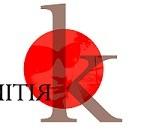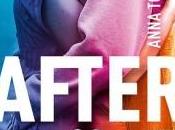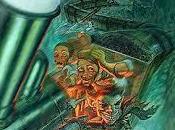City: Milan
Profession: Curator
Link: https://emanuelebeluffi.wordpress.com/
1. Dal punto di vista pratico, cosa hai dovuto fare per cominciare la tua carriera di curatore?
Anche se ho curato tante mostre, sono più un teorico che un curatore. Devo moltissimo a Bianca Maria Rizzi, che per prima mi “scoprì” e scommise su di me, affidandomi l’intervista a catalogo della personale di Marta Sesana. Niente arrivismi e, soprattutto, nessuna scuola, nessun inutile corso post lauream: tu sei ciò che fai. E, appunto, io mi sono dato da fare in maniera piuttosto spontanea, frequentando gli studi degli artisti, tanti, e visitando le mostre, ancora di più. Poi, certo, contano le idee: ti esponi recensendo le mostre sulle pubblicazioni specializzate, come, per esempio, quella rivista che spacca, come si chiama? Kritika
2. Cosa ti ha deluso di questo settore e cosa invece ti ha spinto a continuare?
Le anime belle pensano che il settore sia composto da un mix di mondanità e cultura. Questo è vero per il settore della moda e dell’editoria, dai quali peraltro il mestiere dell’arte ha qualcosa da imparare in termini operativi. Il punto dolente è dato dal rapporto artista/galleria: spesso l’artista è accondiscendente nei confronti della galleria e sovente la galleria non gli/le fornisce un contratto economicamente sostenibile (naturalmente non è SEMPRE così: a volte è l’artista che fa il cagacazzi e non si accontenta dei contratti proposti) . Il risultato: possibili sinergie che si frantumano. Artisti che, quando gli va bene, in assenza di mostre si destreggiano fra le richieste private e i rapporti con la galleria (la galleria ovviamente non può non guardare con estremo sospetto al contatto privato del compratore con l’artista) e gallerie che, anche quando fanno un lavoro di qualità, faticano a investire a causa dell’infelicissima congiuntura economica. Il collezionismo, poi, è in gran parte composto da compratori che vogliono fin da subito, come fosse una regola non scritta, uno sconto sull’acquisto dell’opera, condizione alla quale la galleria non si può opporre. Infine le fiere d’arte (tranne quelle potenti, che a parte Artissima non stanno in Italia) sono carrozzoni che a fronte di cifre più o meno esose non danno ciò che promettono, cioè vendite: non ci si può accontentare dei contatti o giubilare per il fatto di essere rientrati nelle spese (se io avessi un’azienda e il mio fatturato fosse questo, allora vorrebbe dire che devo chiudere o reinventarmi). Questa situazione si propaga al cosiddetto “indotto”, per esempio gli apporti curatoriali, che corrono il rischio di pagare il prezzo troppo elevato di collaborazioni a prescindere, diciamo . E’ un sistema ammorbato, basato su condizioni sia etiche che economiche da cambiare totalmente. Ora. Subito. Per questo vale sempre la pena di continuare. Come diceva l’ex procuratore capo di Milano (che per altro non è mai stato un mio eroe): “resistere, resistere, resistere”.
3. Solitamente scegli tu l’artista da proporre o viceversa lavori su commissione per conto delle gallerie (spazi pubblici etc..), senza preoccuparti troppo per chi andrai a curare la mostra?
Colui (e colei) che scrive il testo o cura la mostra di un artista di cui fino al giorno prima nemmeno sospettava l’esistenza rientra nei casi di “curatela” per interposta persona. L’altra sera ero a una mostra e l’artista in questione mi disse che il prossimo testo sarebbe scritto da una curatrice ha mai vista in vita sua (e presumo lo stesso valga per lei). Io scrivo testi critici e curo mostre di artisti con i quali ho attraversato almeno un tratto di strada e di cui conosco il lavoro, perché io gli artisti li vedo tutti i giorni. Per quanto riguarda il “come”, devo dirti che nella stragrande maggioranza dei casi, almeno finora, si è trattato di collaborazioni nate ex post. Insomma, il più delle volte le proposte, almeno fino a questo momento, sono partite dalla galleria o dall’artista. Ci si è incontrati, idealmente e operativamente.
4. Molti ritengono che il curatore sia una figura superflua, sopratutto in tempi di crisi, tu cosa rispondi?
Se il curatore porta alla galleria (e all’artista) contatti utili, potenziali acquirenti, un’efficace comunicazione agli operatori del settore, un allestimento efficace della mostra e un testo (nell’ormai remotissima ipotesi del catalogo) culturalmente degno, allora certo che sì. Quando ciò non avviene, quella del curatore diventa allora una figura fondamentalmente superflua. Il curatore dovrebbe in un certo senso “sparire” dietro la mostra. A volte invece la mia impressione è che il curatore diventi una primedonna che, “scavalcando” l’artista, assume con ciò stesso un ruolo che non è affatto necessario (se si limita a scribacchiare il testo critico e stop). La critica è una cosa, la curatela un’altra. In tempi di crisi il curatore deve reinventarsi, facendo esattamente ciò che ho detto, non disdegnando per altro le relazioni con le realtà economiche altre rispetto alle gallerie, con le quali tuttavia è possibile sviluppare sinergie. Bisogna fare i conti col principio di realtà. Come sotto, così sopra: urge un rinnovamento del sistema, sia etico che economico.
5. Qual è l’arte che vale per te?
L’arte di farsi da sé. E quella di Jean-Michel Basquiat.
————————————————————————————————————————————————————————————————–
1. What did you do to start your career as a curator?
Although I have curated many exhibitions, I’m more a theoretical than a curator. I owe a lot to Bianca Maria Rizzi, who first “discovered” and bet on me, entrusting to me the interview in the catalogue for the Marta Sesana solo exhibition. No social climbing and, above all, no school, no unnecessary post-graduate course: you are what you do. And, in fact, I got busy in a rather spontaneous way, attending artists’ studios, many, and visiting exhibitions, even more. Then, of course, ideas count: you expose yourself reviewing the exhibitions on specialized publications such as, for example, the magazine that cracks, what’s his name? Kritika.
2. What did disappoint you in this field and what did push you to keep on?
The beautiful souls think that the industry is made up of a mix of mundanity and culture. This is true for the field of fashion and publishing, from which the profession of art has something to learn. The weak point is the relationship artist / gallery: the artist is often condescending towards the gallery and often the gallery doesn’t provide an economically viable contract. The result: the possible synergies crumble. The artist that when things go well waves between the demands of private and the relationship with the gallery (the gallery obviously doesn’t look kindly at private contact between the buyer and the artist). The gallery, even when does quality work, does not invest because of the economic downturn. Collecting, is largely made up of buyers who want right away a discount on the work, as if it was an unwritten rule to which the gallery can not resist. Finally, the art fairs (not the big ones, that except for Artissima are not in Italy) that ask more than they can promise, ie sales. This situation is propagated to the so-called “induced”, for example the contributions curatorial. It’s a tainted system, based on conditions that must change both economically and professionally. And must change now. For this reason it is always worth to keep on.
3. Do you usually choose the artist to propose or do you prefer to work on commission?
Who writes the text for or curate an exhibition of an artist that until the day before was unknown, is listes among the curatorship nominees. The other night I was at an exhibition and the artist in question told me that the next text would be written by a curator she has ever seen before (and I assume the same applies to the curator). I write for exhibitions of artists with whom I went through at least part of the way and so I know the work and the artists because I see them every day. As for the “how”, I have to tell you that most of the times, at least so far, collaborations born ex post. In short, they started from the gallery or the artist. Then we have met, ideally and operationally.
4. Some people believe that the curator is a superfluous figure, especially in times of crisis. What do you say?
If the curator bring to the gallery (and to the artist) useful contacts, potential buyers, an effective communication and a culturally worthy text (in the now very remote hypothesis of the catalog), then of course it is not. Otherwise, the curator becomes a figure basically superfluous. He, or her, should in a sense “disappear” behind the exhibition. Sometimes however, my impression is that the curator becomes a primadonna that, “bypassing” the artist, takes a role that is not necessary (if it is limited to scribble a critical text and stop). Criticism is one thing, curatorship another. In times of crisis, the curator must reinvent himself/herself, doing exactly what I said, not disdaining to relate with other economic realities than the galleries, with which synergies can be developed. You have to deal with the reality principle. As below, so above: a renewal of the system is needed, both ethical and economical.
5. Which is the art you worth most?
The art of making yourself. And that of Jean-Michel Basquiat.

Emanuele Beluffi

Emanuele Beluffi

Kritika







